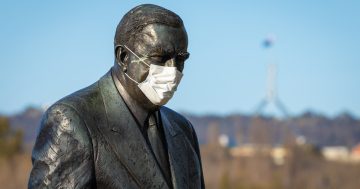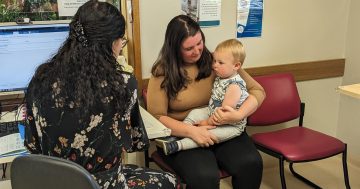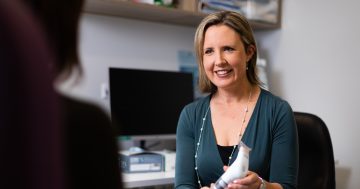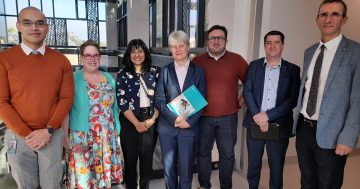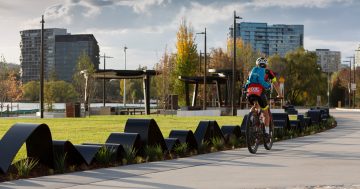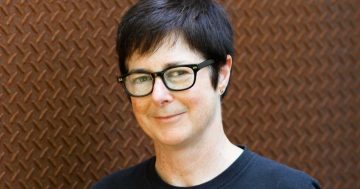
Virology research officer Shadi Shahriari at work in the lab at the University of Canberra. Photo: UC.
Research at the University of Canberra (UC) Faculty of Science and Technology is looking at ways to tackle a potentially life-threatening virus.
UC physiology lecturer and virology research officer Shadi Shahriari is investigating a crucial step in the assembly of Respiratory Syncytial Virus (RSV) – a leading cause of hospitalisation and potentially deadly illness for children and infants.
RSV – one of the viruses that can cause the common cold – is one of the most frequent causes of lower respiratory tract infections in the world.
But what may cause a simple cold for adults can result in a severe infection in young children, the immuno-suppressed and the elderly.
“RSV infection often leads to pneumonia, bronchiolitis and unfortunately, death,” Dr Shahriari says.
“Infection in the very young is often related to childhood development of asthma. So it is a nasty virus.”
In late 2020, ACT Pathology confirmed more than 400 cases of RSV in children under five years old with 46 per cent positive tests.
RSV-related hospitalisations come at considerable annual economic cost to the country. One report showed in 2018 they resulted in a combined national healthcare bill of about $6 million for children under five, or $17,000 per child.
Dr Shahriari says while research into RSV worldwide has many promising drugs in the pipeline, hers has found an interaction between a key viral protein, the matrix protein, with a cell’s “cytoskeleton” – the scaffolding that gives a cell its shape.
“The matrix protein plays an important role in bringing all the other viral proteins together to complete the virus,” she says.
“The completed virus can leave our now infected cell to infect our other cells and those of other people.”
Dr Shahriari says viruses are master cell manipulators, able to remodel a cell’s cytoskeleton as needed.
“Think of our cells as a house which is kept upright by the walls – our cytoskeleton,” she says.
“Now think of RSV and other viruses as home renovation experts. They come in and pull down walls, they make space here and make space there so they can move about freely. Some even move a wall somewhere else so they can use it.
“My work has shown that the interaction between the RSV matrix protein and the cytoskeleton is very important for the virus to grow.”
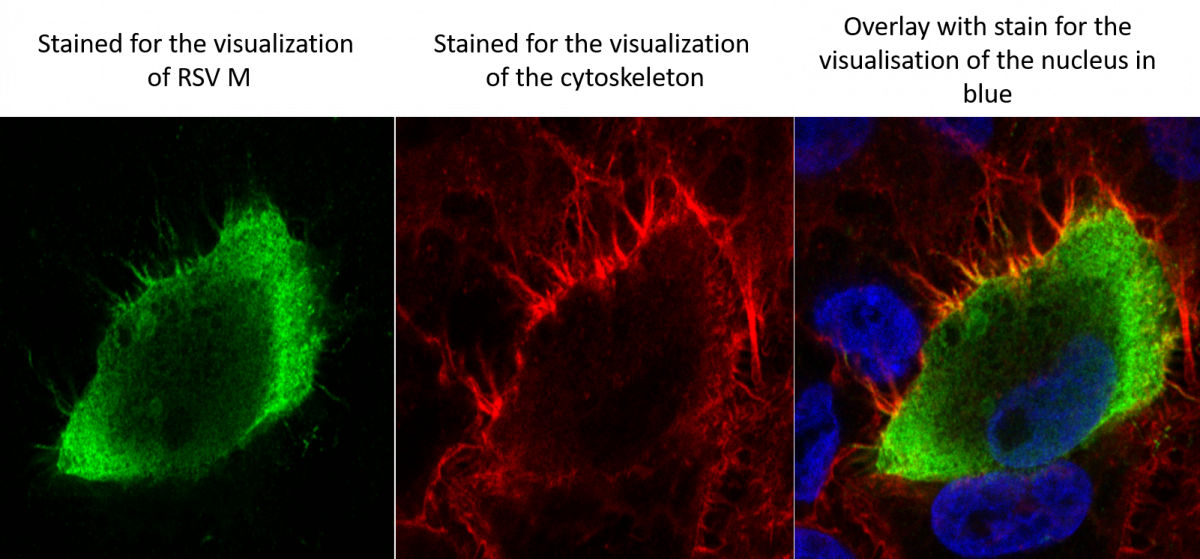
This image from one of Dr Shahriari’s publications shows a cell infected with RSV. The RSV matrix protein is shown in green and the cytoskeleton in red, next to an overlay of the two. Photo: Shadi Shahriari.
During the last semester of her undergraduate degree, Dr Shahriari, an asthma sufferer, opted to complete her professional placement with UC’s Professor Reena Ghildyal. The professor focuses on the relationship between respiratory viral infections and the development of asthma.
“Her work on the RSV matrix protein is what interested me the most – how did this one protein coordinate so much?” Dr Shahriari says.
“So I came back to do my honours research project focusing on that in her lab, and continued for my PhD.”
It’s hoped the doctor’s research, conducted in the faculty’s Biomedical Research Cluster, may one day inform ways to halt the virus’ wicked “renovations”.
“My research has found an interaction between the RSV matrix protein and the host cell cytoskeleton during infection – stopping this interaction has shown a reduction in the release of viral progeny.
“We have also found another protein that may actually facilitate this interaction. Much of that is unpublished research, which we are hoping to publish very soon.”
Dr Shahriari says understanding how the infection takes place puts us in a better position to develop targeted strategies for preventing and treating RSV infections.
“As my work focuses on the role of the matrix protein in the later stages of RSV, we are hoping the knowledge on how it drives the coming together of the virus will provide the basis for an antiviral – a drug for treatment.”












